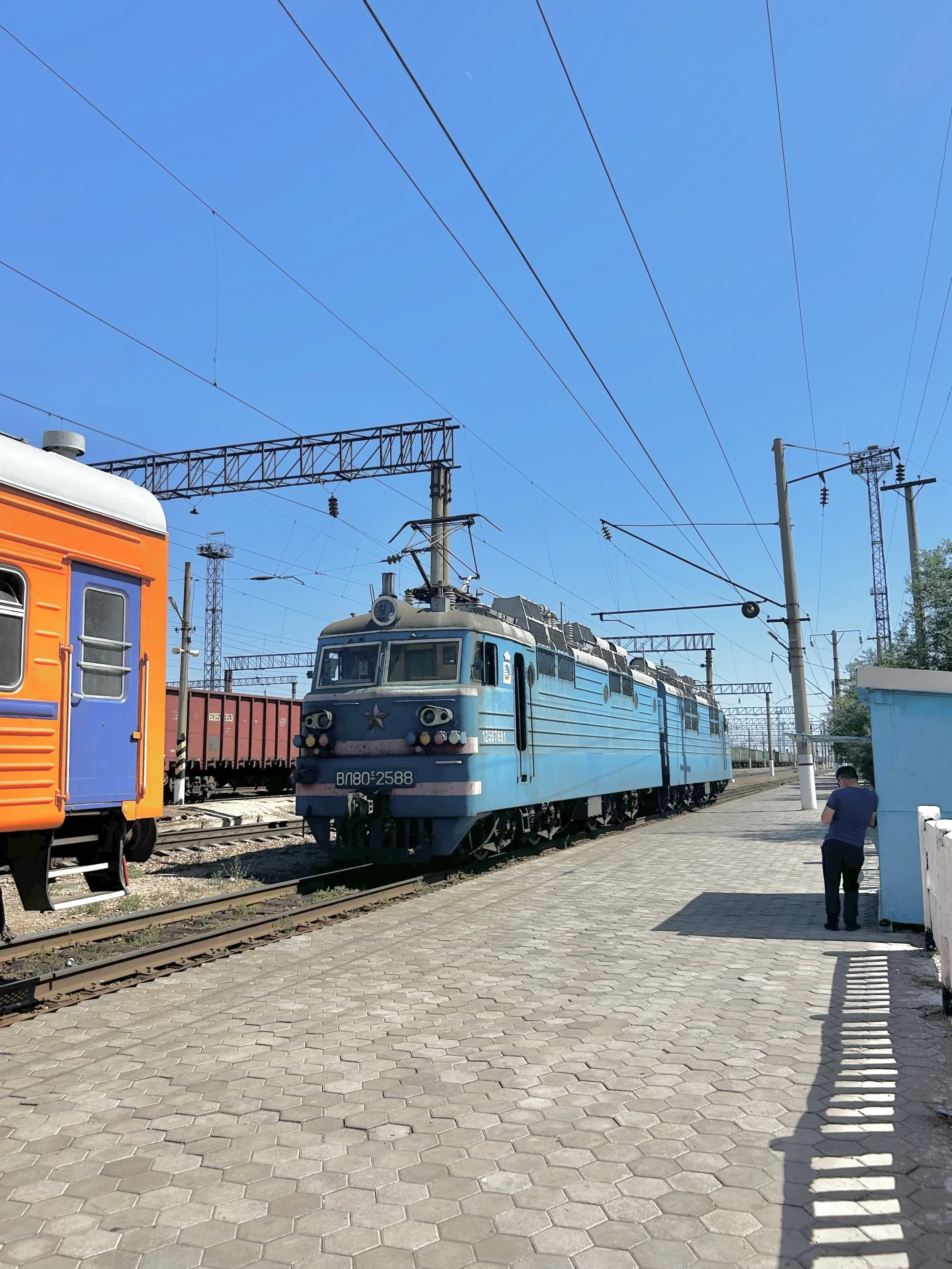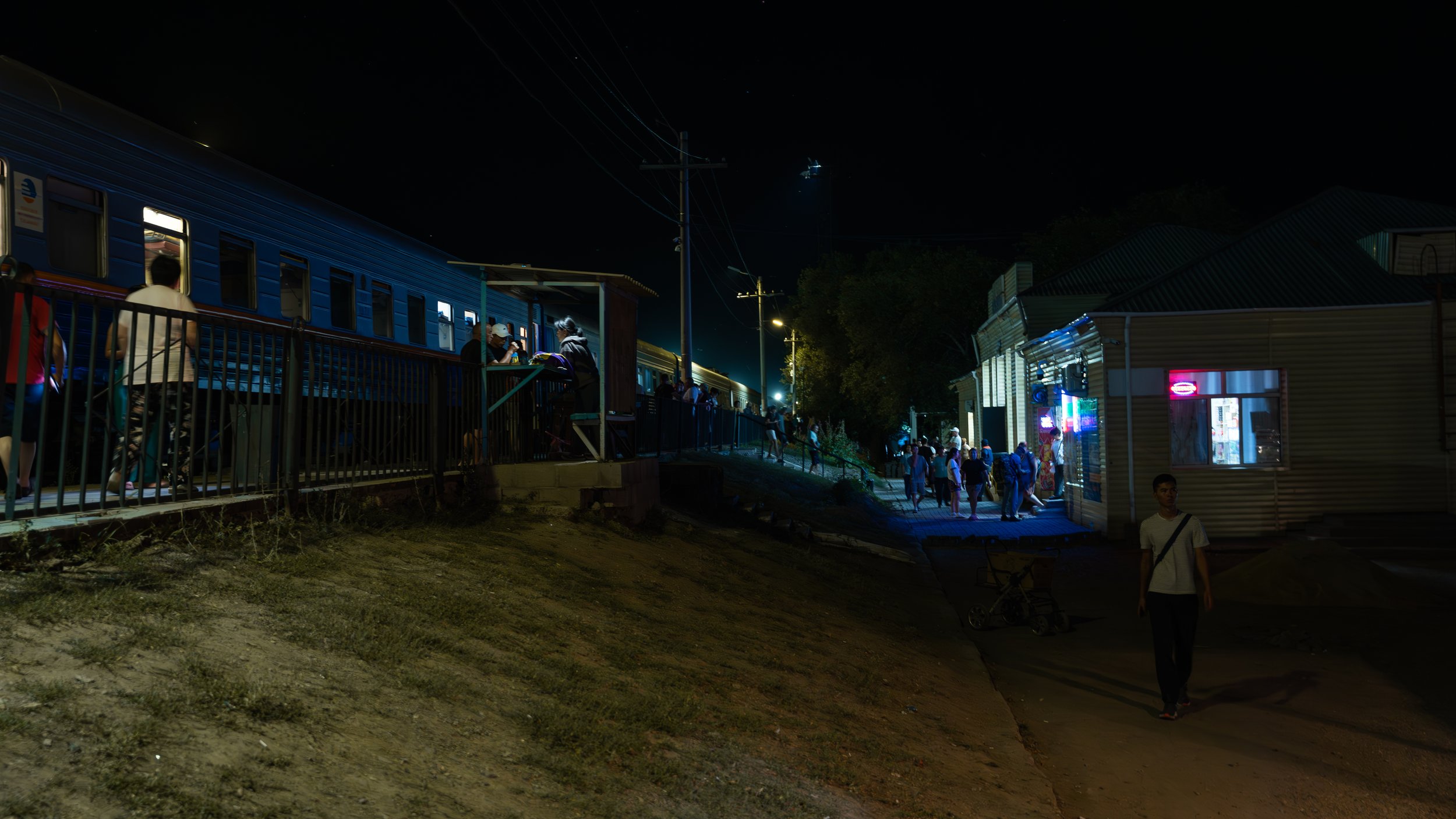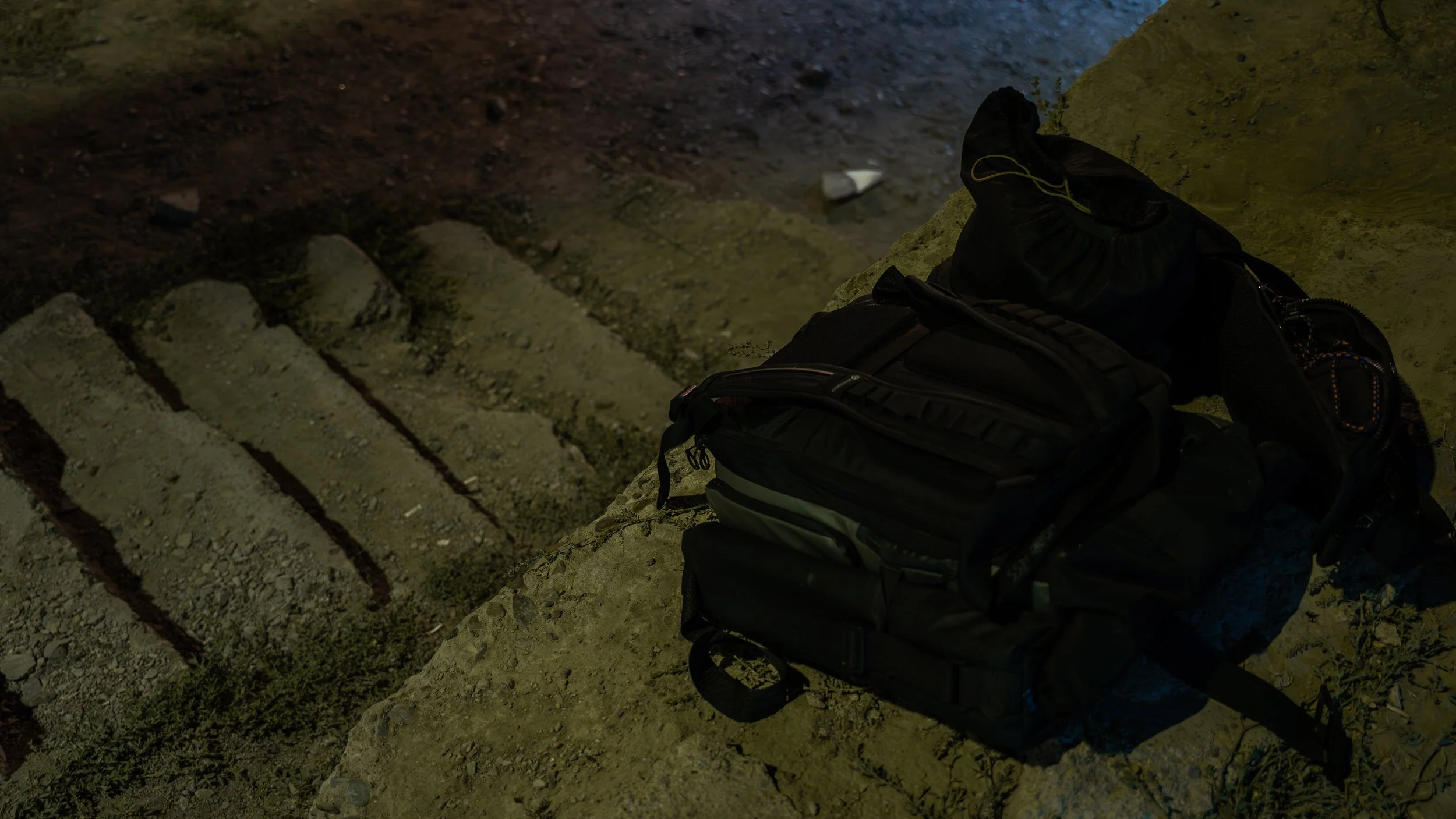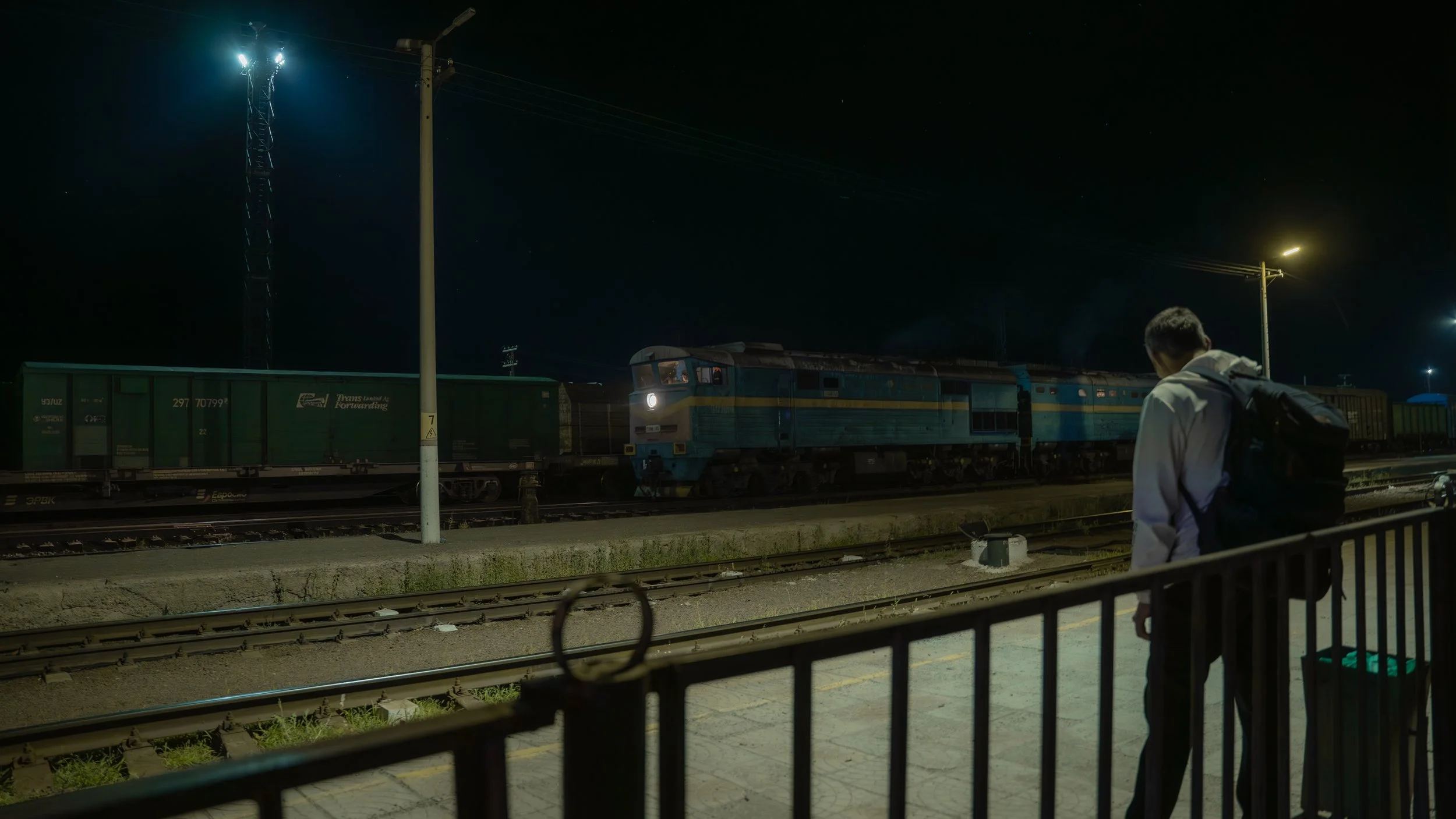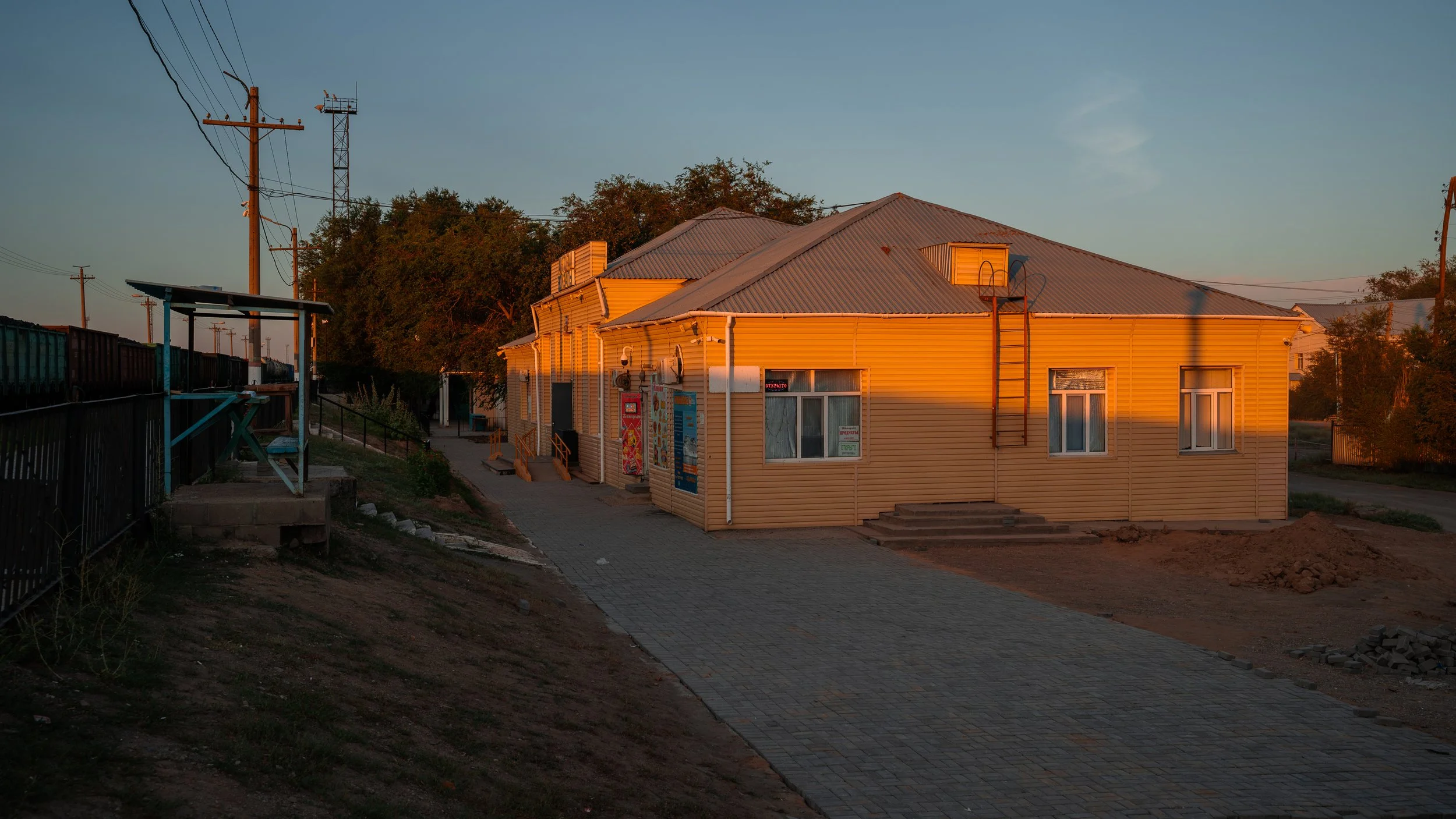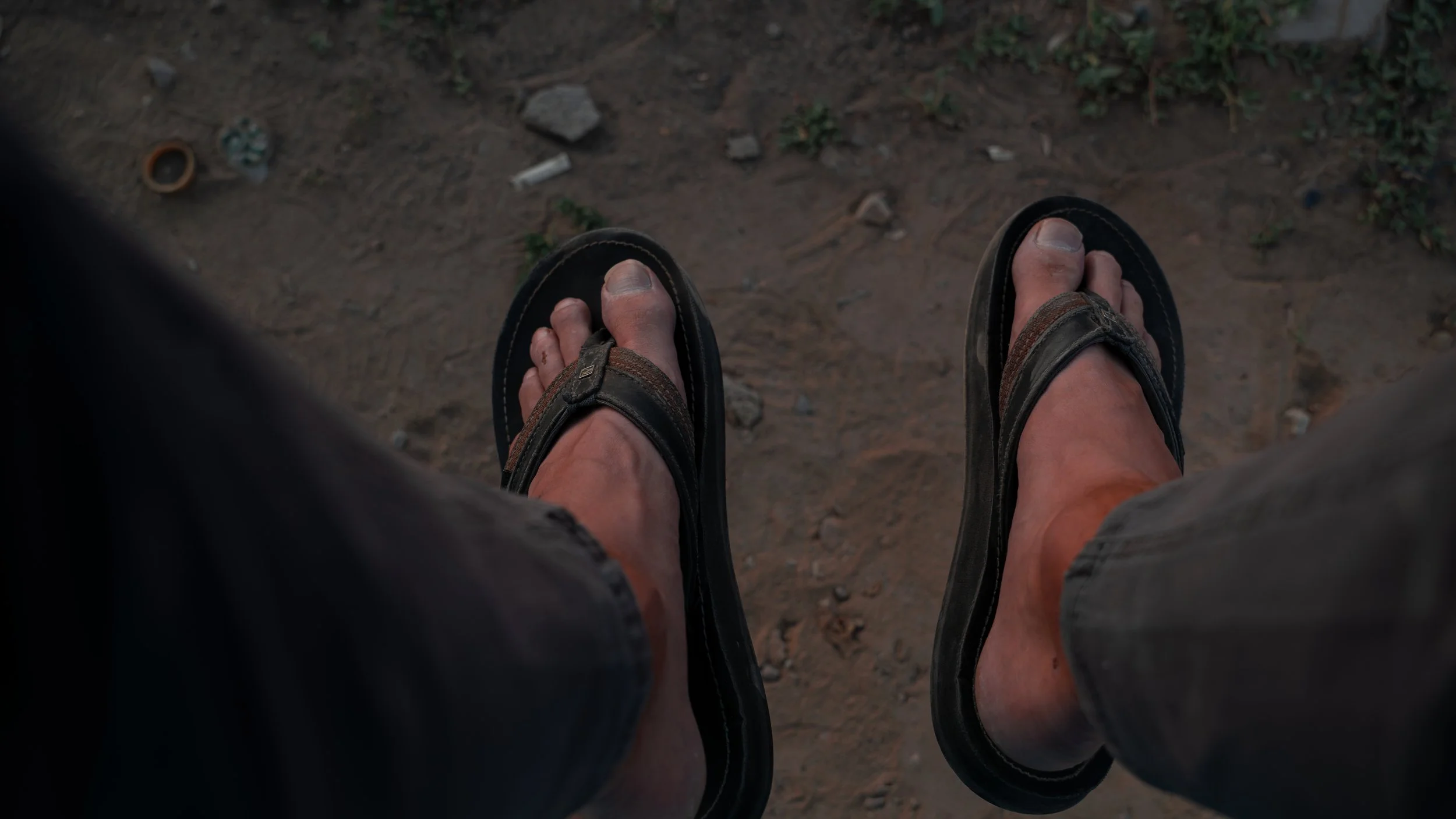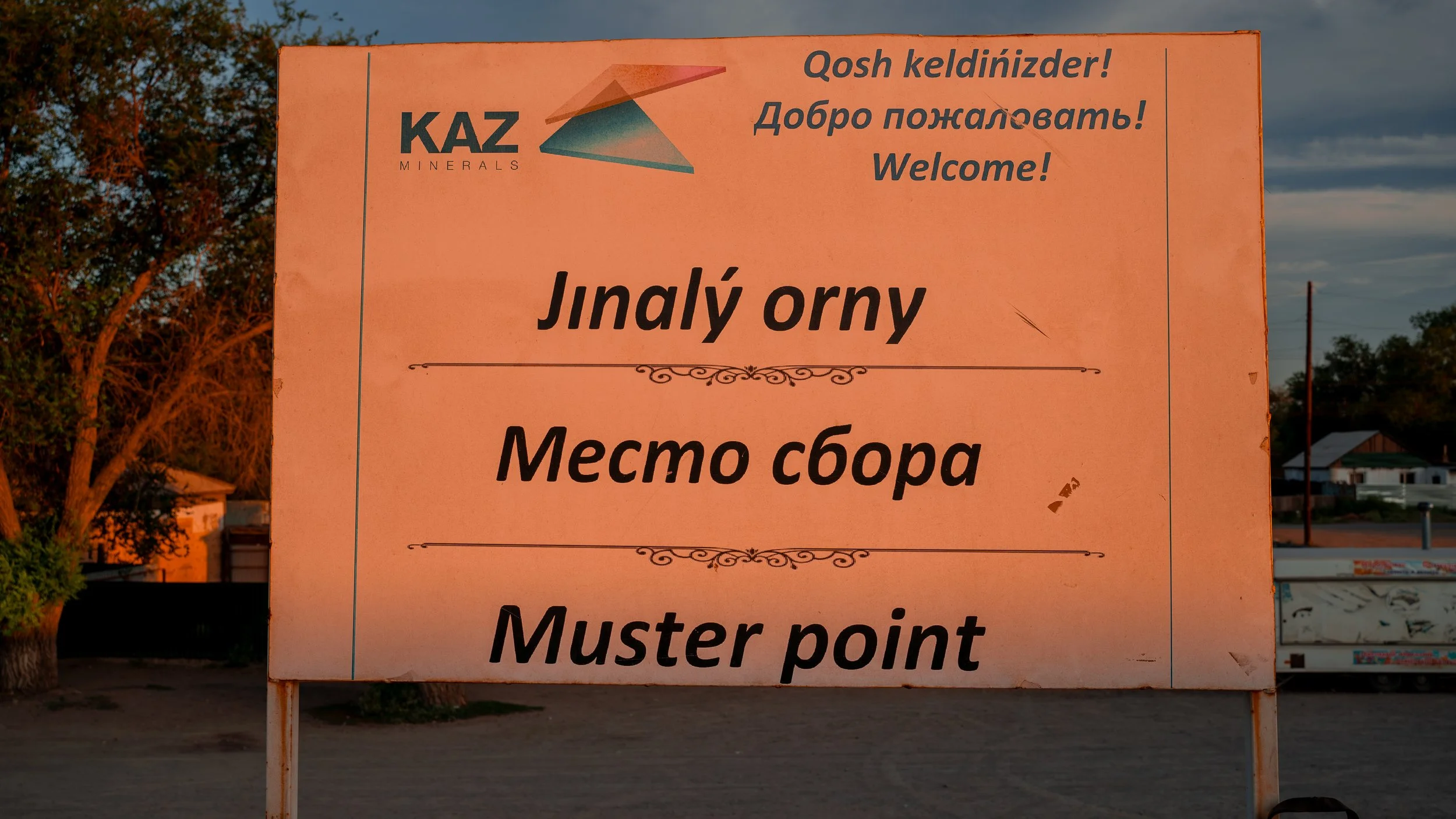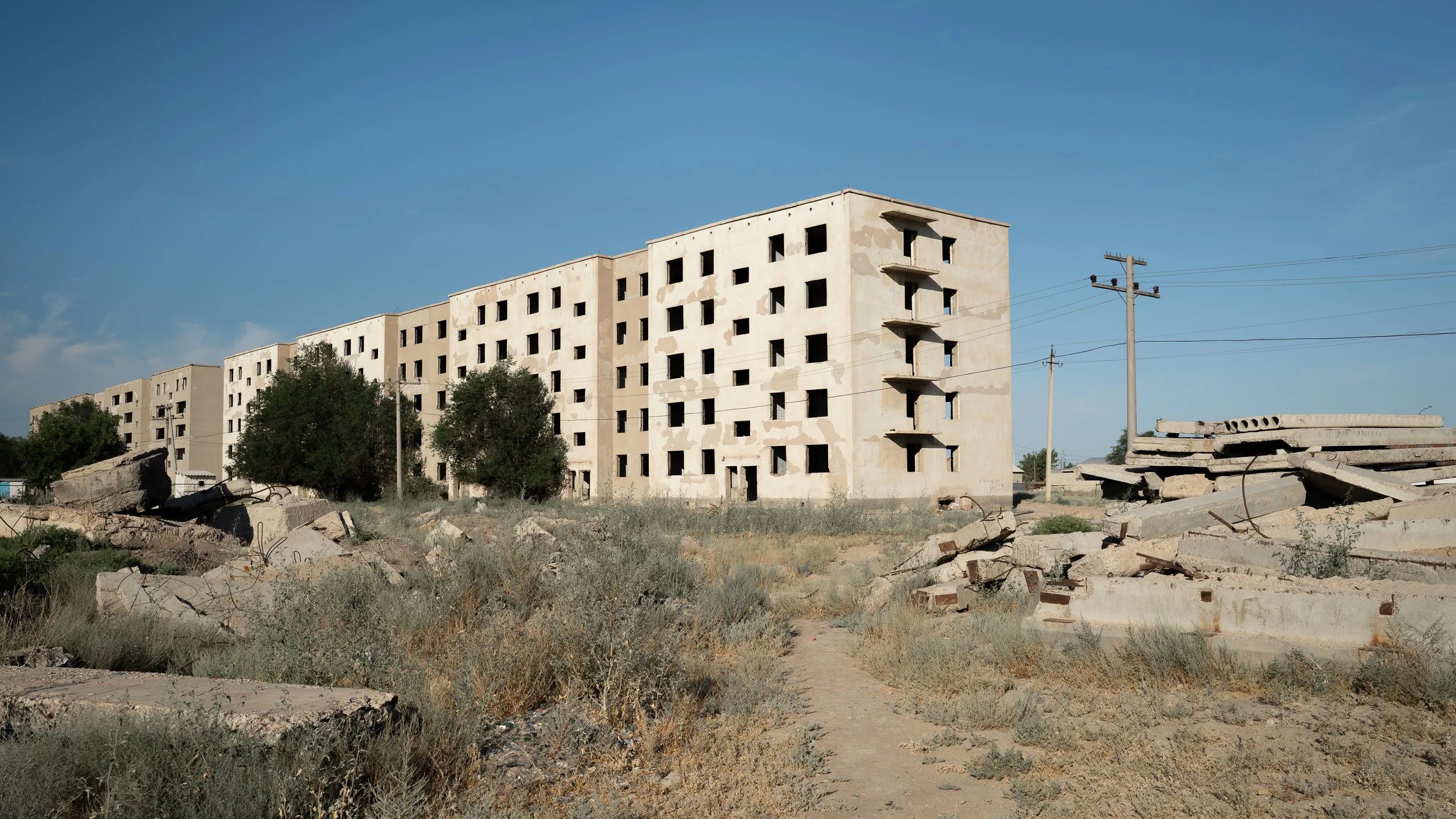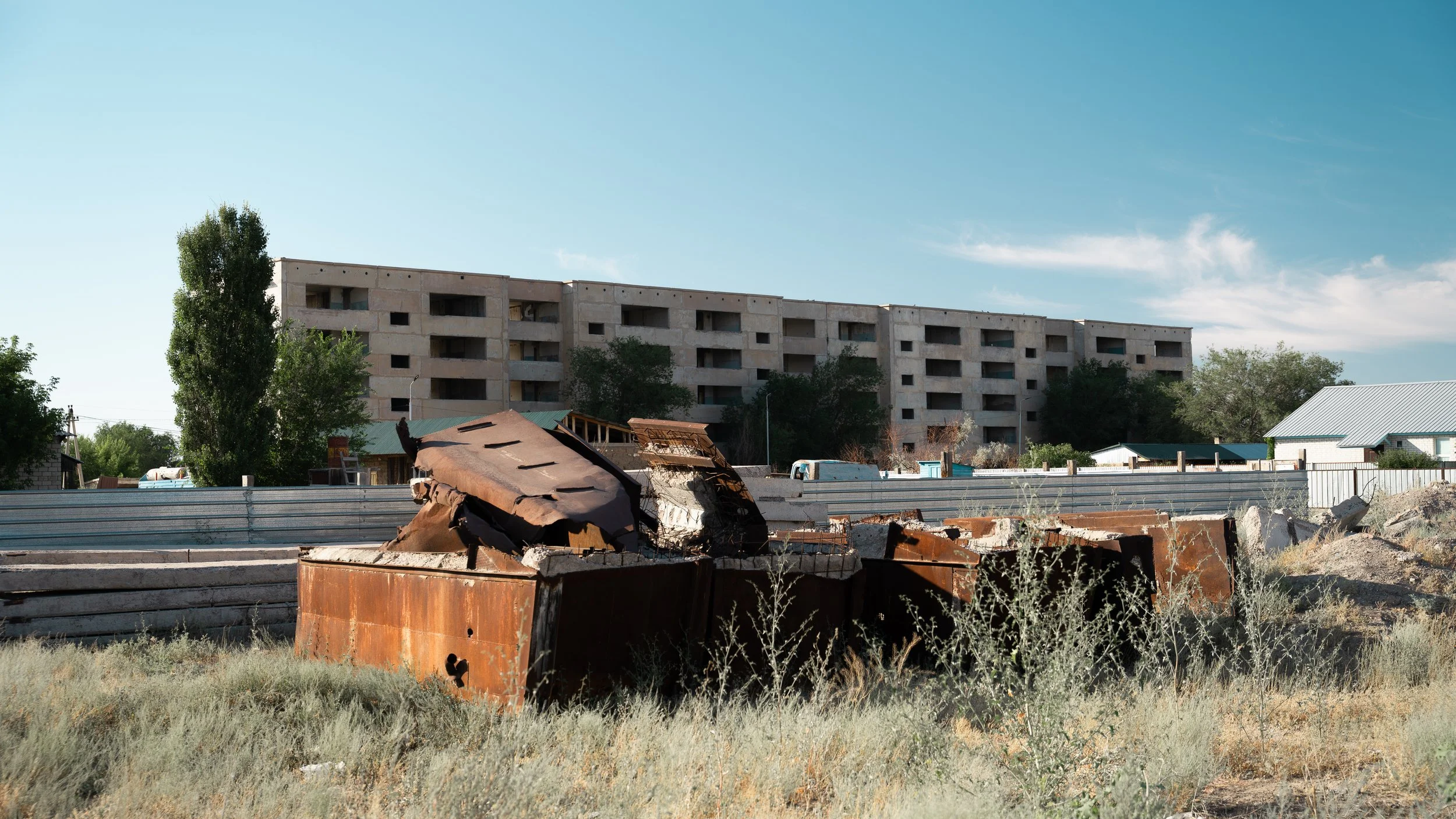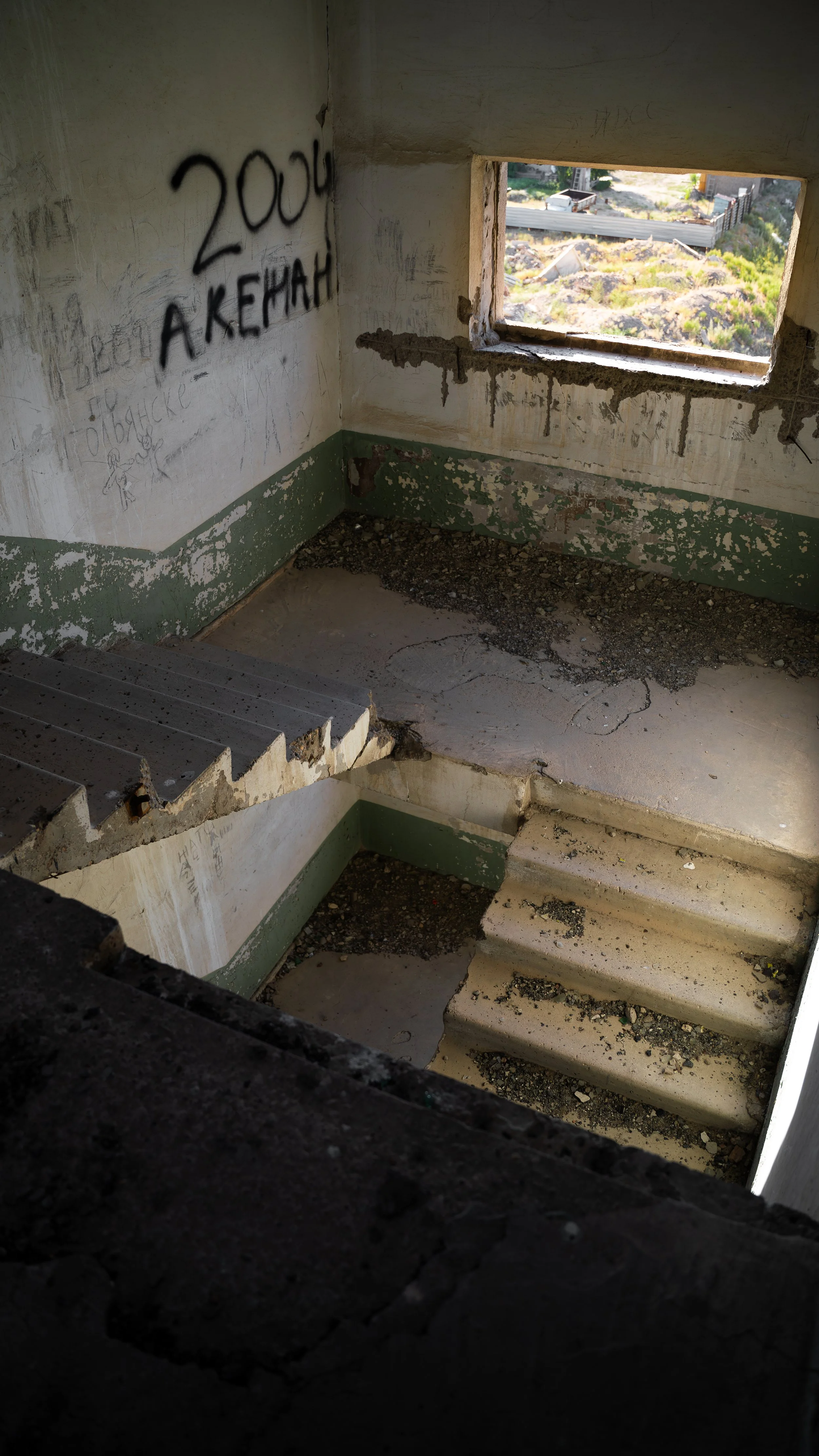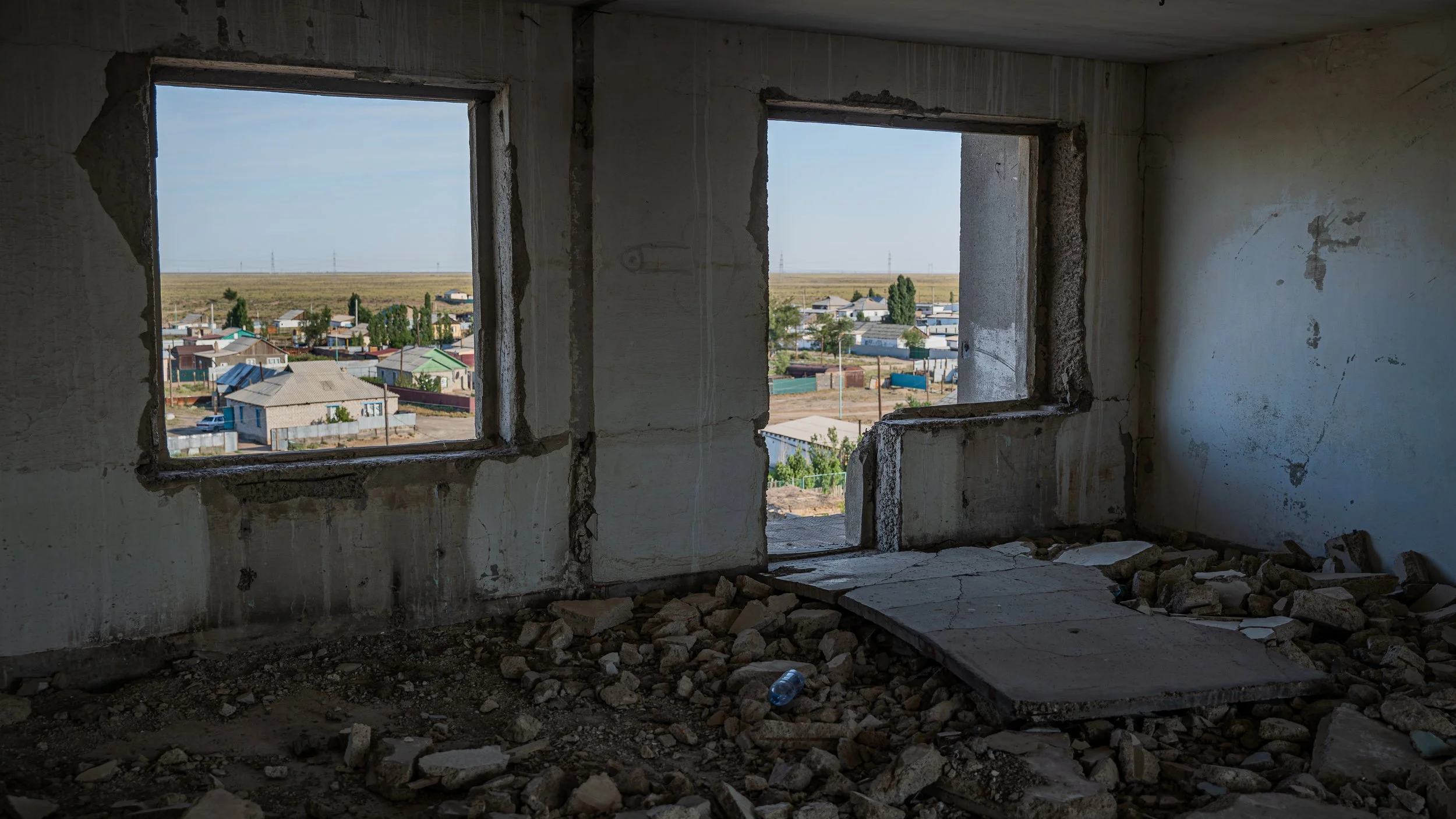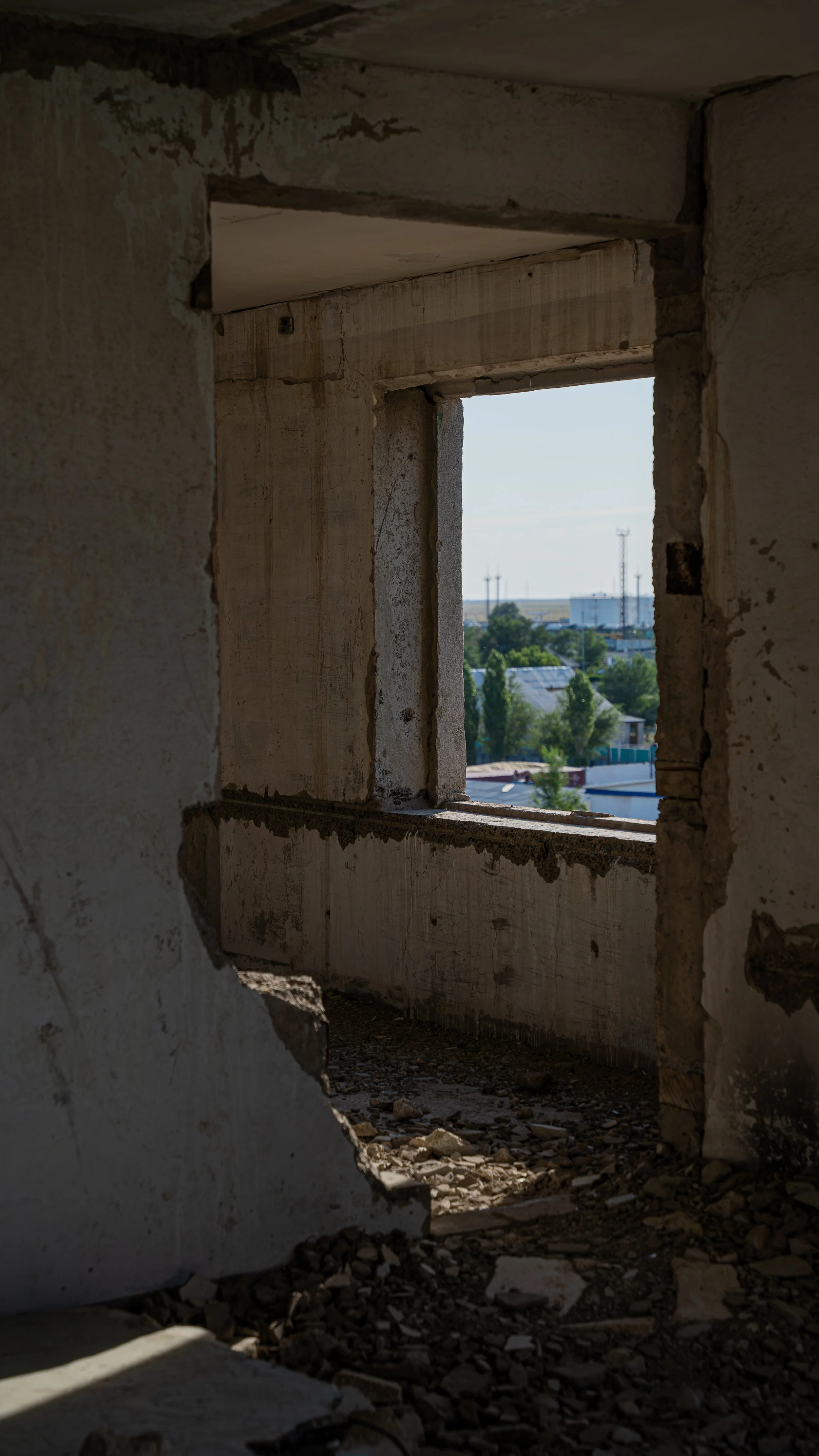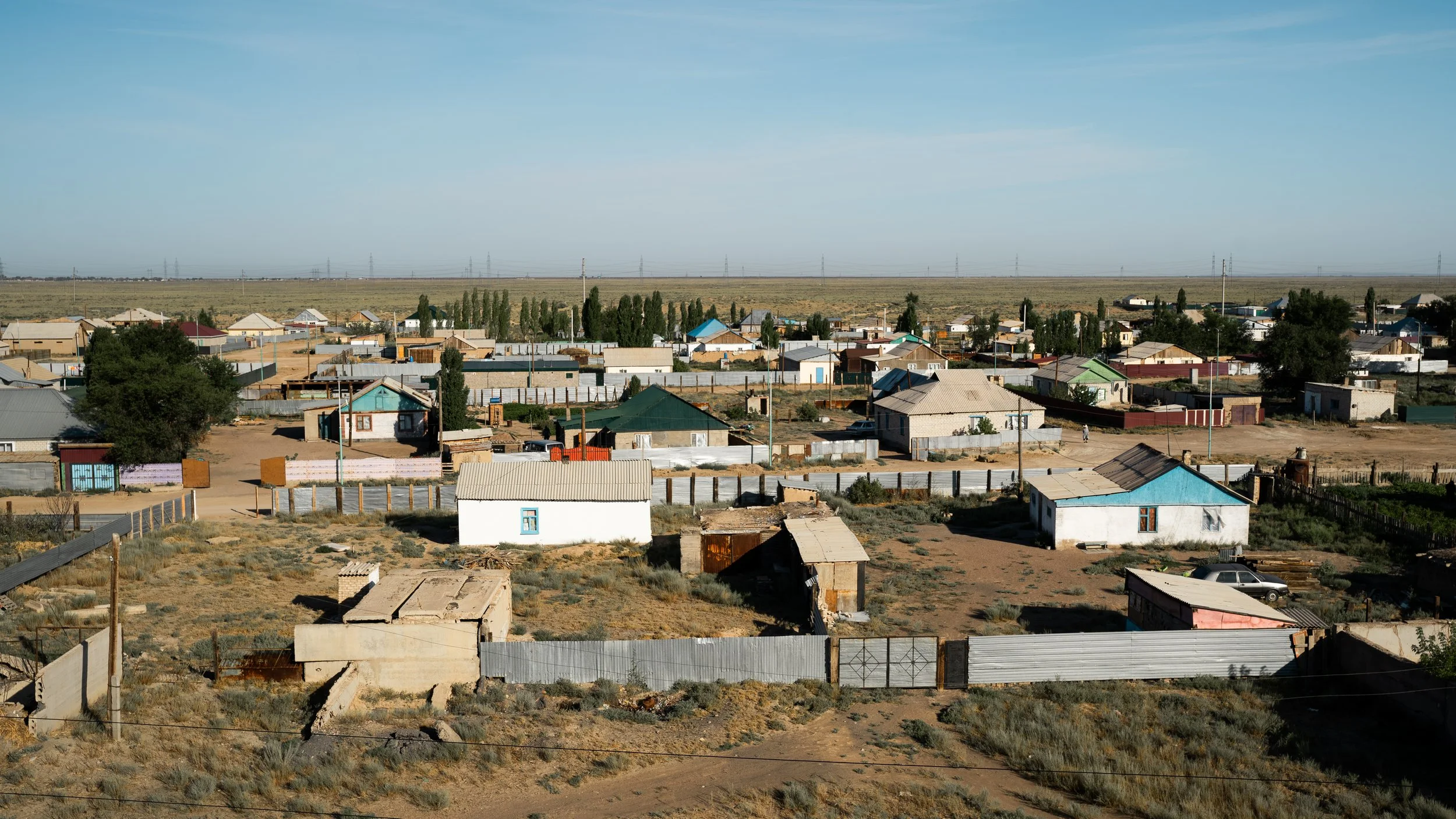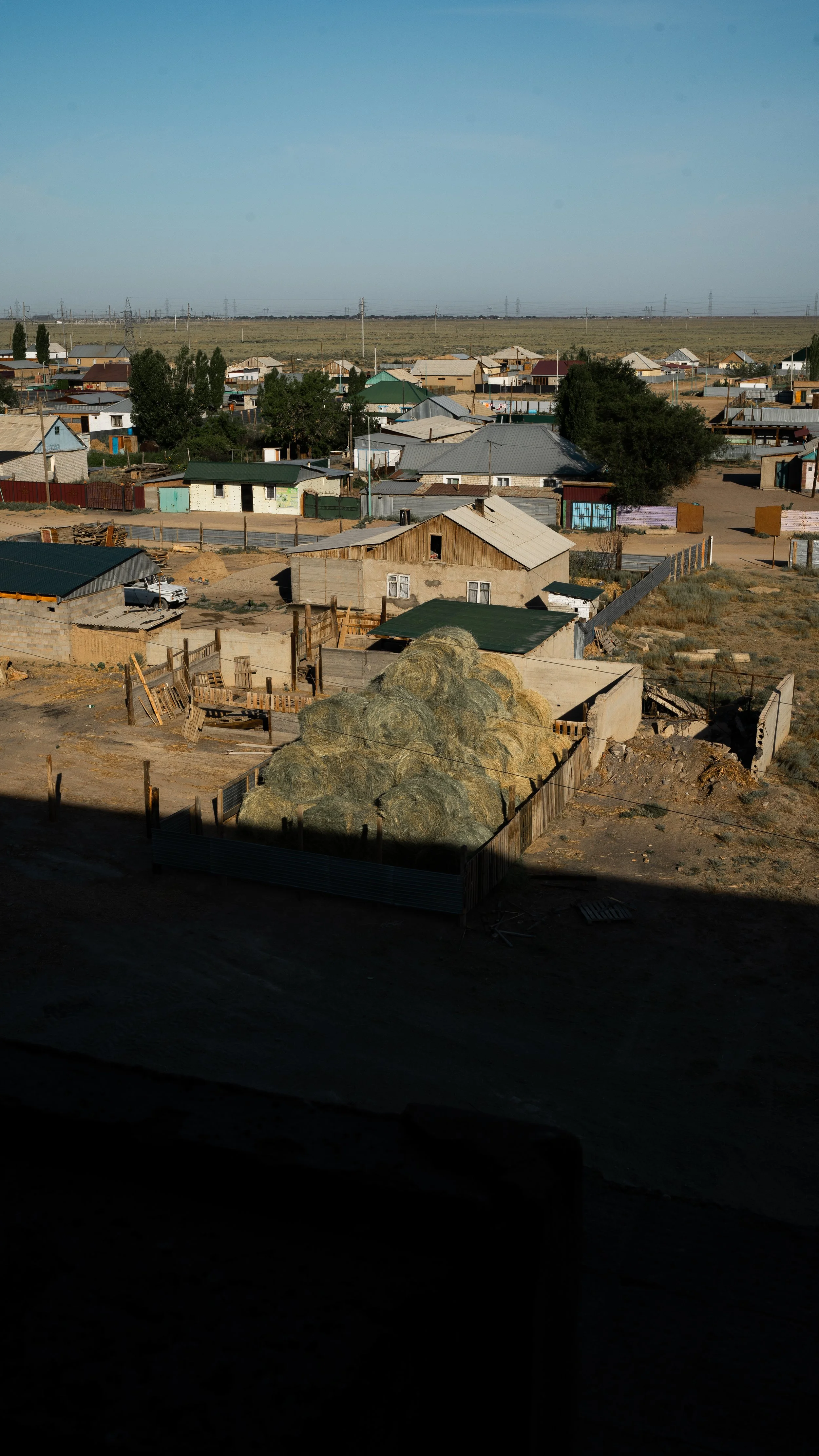15 Hours in Aktogay
This is the last post in a four-part series covering my railroad journey between Almaty and Astana.
The Talgo - Балхаш - The Future - 15 hours in Aktogay
Do not attempt to book round-trip tickets a week before traveling in the world’s ninth-largest country. My proposed plan involved visiting the Caspian Sea region after three days in Astana. I even planned on traveling through neighboring Uzbekistan along the ancient Silk Road route. Yeah, I didn’t make it to these places. My ambitious plan quickly fell apart when I couldn’t find enough timely connections between each town and I needed to be in neighboring Kyrgyzstan before my thirty-day Kazakh visa-free stamp expired. The only route back to Almaty by train was through Balkhash and Aktogay. I felt disappointed about my poor planning but instead looked towards finding a happier side to experiencing this route again. I could spend another day in Balkhash at the same hotel with Alina and Chingiz. I even met a younger Ecuadorian English teacher living in Russia. We had a great time exploring Balkhash before I entered the most tiresome length of my journey.
The VL80 Electric locomotive was built in Novocherkassk, Russia, and produced between the 1960s and 1990s. A portion of the track between Astana and Balkhash is electrically powered.
Welcome Back :)
I arrived in Aktogay on a full stomach. A generous family in my train cabin shared a large container of soup and bread with me. They also brewed the hottest tea imaginable. The unexpected wobble in the train wagon worked against my ability to gauge when the tea was about to strike my tongue. Despite losing my sense of taste for the rest of the night I felt fortunate to experience a culture so welcoming to others. I don’t know if it’s because of this country’s difficult past, Islamic values, or nomadic heritage that causes people to reach out with open hearts. I also feel welcomed into the language. Russian speakers are always willing to help me pronounce words without feeling annoyed by my lack of skill or knowledge. Instead, people get curious about my ability to speak Russian and I know it would be more exciting for them if I could speak in Kazakh or Kyrgyz. Maybe I’ll learn those next.
Most of the shops began to close down by midnight. The station fell silent with the occasional sound of train horns and wagons clacking together in the junction. I sat down with the grasshoppers again to watch the commercial locomotives push and pull wagons loaded with the nation’s natural resources. I had no internet and nobody willing to engage in deep conversation this late at night. People were tired and just wanted to board their train to go somewhere that wasn’t here.
This is the bag I usually travel with. It’s a Wandard 30L PRVKE camera bag. I lived out of this for two months in Kyrgyzstan the summer before. I can comfortably carry my laptop, camera, four shirts, two pairs of pants, a pair of shoes, and toiletries. I also strapped a Small Rig tripod to the side of the bag. I carried a small crossbody large enough to fit my camera and an extra drawstring bag for dirty shoes and clothes. Everything clips onto the PRVKE bag which keeps my hands free of holding anything.
Made a new friend to watch the trains with
TEP33A diesel-electric locomotive designed by General Electric. Assembled in Astana c. 2016.
2TE10U Diesel Electric locomotive designed and built in Luhansk, Ukraine. Produced between 1960s-1990s.
CKD6E diesel locomotive designed and manufactured in Beijing, China
I went inside the station to find a decent spot to sleep. Nothing seemed very relaxing. The metal framed chairs looked terrifying to my backside. I prepared to lie on the floor using my bag as a pillow. Next to me stood an ATM and a door to the police office. A few hours painfully passed by until another passenger train arrived. The station came to life again. It must have been about three in the morning. A woman spoke over the loudspeaker as passengers flooded the station to find all the best seats only to be occupied by people sleeping across them. An older Russian in his mid-forties was seated near me in the row of chairs. A few of his teeth were missing from his smile. His smoker’s voice made it difficult to understand what he was saying. The man needed to use the bathroom and asked me to watch his bags. He returned to find me struggling to get comfortable on the floor and insisted I would find better sleep in a chair. I refused to move. We exchanged a few words about which trains we were departing on. I remember him grabbing my ticket to see if I hadn’t missed my train. I knew he was only trying to help and wasn’t bothered by his actions. I just lacked the energy to talk to this guy. Everything around me seemed to move fast while lying on the floor with my eyes half open. It felt like those movie scenes where the audio increases in decibels and the frames become faster and faster. Just a chaotic scene. Then suddenly, the scene cuts to silence and a black screen.
The night disappeared when I woke up to a rising sun filling the soulless station. How often does someone like me decide to tough it out in a train station in Aktogay? Why do I find a weird sense of satisfaction with something that would most likely annoy me if I were in my own country? Most of us would find this layover simply as an inconvenience and nothing more. Frequent travelers on this route would probably agree. I am the only one who chose this connection. The only one still standing on the train platform. I framed my experience as something special and unique to my time in Kazakhstan. I could have spent my time engaging in activities worth more. I guess I am asking myself what is worth more to me when I am traveling. I am not interested in checking off all the most attractive places for nature, restaurants, museums, or activities. Of course, there is nothing wrong with enjoying all the best a country has to offer. For instance, I admit I rarely ventured off the beaten path in Italy, photographing the Collesium and the Pantheon like everyone else. I know my next trip to the boot will look much more like visiting the Aktogays and Balkhashs of the country. It’s also interesting to experience something so mundane like a layover at a train station in a different country.
Railroad towns across the former Soviet Union usually have an old steam locomotive monument.
This locomotive was most likely produced in the mid-1940s.
In need of a good shower
Kaz Minerals muster point
I’ve mentioned that Aktogay is home to an open-pit copper mining operation a few miles away. Kaz Minerals currently operates the site and produces 170 kt of copper per year. Mining operations began in 2015 and according to the site data, the mine has a life of around twenty-five years. Kaz Minerals also owns and operates other sites across Kazakhstan and Kyrgyzstan.
The elderly lady I had bought a bag of Manti from during my first stop in Aktogay arrived at the station. She sat down at the same brightly colored table near the platform. She remembered me from our last encounter the week before and asked if I worked for Kaz Minerals. I laughed and told her I just submitted my final college assignment online in a hotel room in Astana. I bought a potato-filled Piroshki from her and continued to watch the junction come to life with commercial trains.
I thought about exploring the village before my train arrived. I wasn’t entirely sure how safe it would be when I considered Bek’s advice about staying close to the station. How dangerous could this small village be in the early morning sun? I waited for Google Maps to load the satellite image of Aktogay and noticed a cluster of apartment buildings located on each end of the village. I gotta see this!
The thought of constructing a handful of Krushchevkas in a small village in the middle of nowhere caught my attention. What constituted a need for their construction in Aktogay? Did Aktogay experience a housing shortage? In the late 1920s, Aktogay was another town put into existence by the newly constructed Turk-Sib railway. How could this small village demand more housing units without any form of industry to encourage its growth? Copper production didn’t begin until 2015 and even now, the town hasn’t seen any new large-scale housing developments. So what happened to Aktogay between the 1950s and 1980s when the Krushchevkas were among the most popular housing methods of the USSR?
I was shocked to find the apartments in an abandoned state. They were completely gutted out from the inside and stripped of whatever materials were used on the outside. Locals must have sold the materials for profit or for personal use in their homes.
It almost looks as if construction was never completed. Hollow five-story structures tower over the surrounding homes. What a strange sight to see. I wonder what nearby residents think when they look out their windows and see these uninhabited layers of concrete. I debated in my head whether I should enter. Was I being watched? Probably not by anyone with authority other than a curious farmer watching me snap photos.
I walked up the stairs inspecting the integrity of each concrete step. I stopped on each level to hear for potential footsteps moving through the broken glass and concrete. This is most likely a hangout spot for people to drink and wake up hungover in the morning. I searched for any discarded belongings of former residents that could tell a story of this place. No luck.
No shortage of sunrises and sunsets with these views
The apartment casts a shadow over a local famers backyard
The elevated stretch of land behind the wind turbines is the Kaz Minerals mine
A regional cell phone provider must have taken ownership of the other apartment with antennas on the roof. The apartment is fenced off and has a new set of windows.
It turns out I was standing in the remnants of the Sino-Soviet split. Relations between the Soviets and the Chinese began to deteriorate in the late 1950s after differences in communist ideologies strained the two countries from building a communist world together. By the mid-1960s, both sides had heavily militarized their shared border. Villages and towns along the border began hosting Soviet military bases. Aktogay hosted the 57th Separate Landing Assault Brigade.
Unfortunately, information about the former base is scarce. I found YouTube comments under a short video from 2012 of people saying they served here in the ’80s. I also looked through the declassified documents available on the CIA’s website. Documents from 1966 indicate that an airstrip was constructed near Aktogay. The airstrip is still visible on Google Maps today and sits abandoned near the Kaz Minerals mine. The apartments must have been constructed around the same decade and could have housed families of military personnel.
In 1969, violent clashes along various segments of the border resulted in deaths on both sides. The final clash occurred near Lake Zhalanashkol in the Kazakh SSR located 170 miles east of Aktogay. Soviet border troops destroyed a small force of Chinese soldiers while taking on two casualties of their own. The Soviet military moved the headquarters of the Central Asian military district from Tashkent to Almaty in response to the border clashes.
The advent of a possible nuclear war between the two nations loomed overhead for decades. Fortunately, tensions cooled off by the late 1980s. But by the early 90’s the USSR had fallen. A newly independent Kazakhstan restructured a military from the old units that were located in the Central Asian military district.
Finally leaving Aktogay
I hope you enjoyed reading about my solo adventure and were able to learn a thing or two about this part of the world. Traveling to Central Asia and learning the Russian language in college has put me on an interesting trajectory. I certainly did not foresee the latter half of my college career going in this direction when I enrolled as a freshman. My initial plan consisted of taking a semester or two in Moscow, Russia. But sometimes our world changes and causes us to find a new path. Central Asia suddenly became my outlet for learning the Russian language and experiencing what it’s like to work overseas. It slowly became my mission to use photography to show an underrepresented and often misrepresented region of the world for audiences back home in the West.
Thank you to those who supported me financially. Your support paid for a large percentage of my travel expenses. This adventure through Kazakhstan was life-changing for me. My short time spent in the region is just the beginning of a decades-long relationship with Central Asia.
